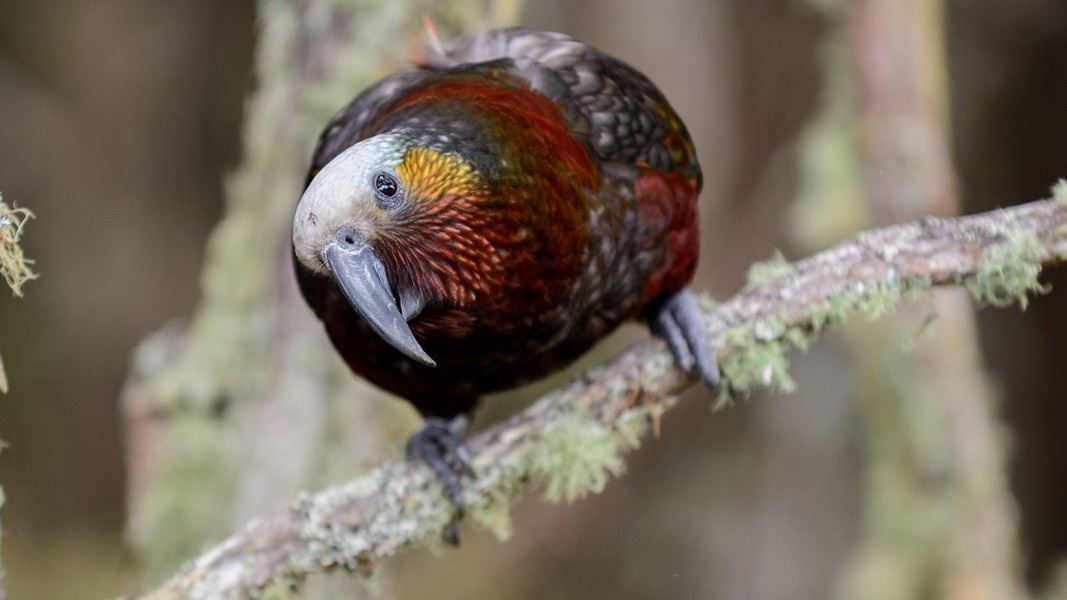
Archived content: This media release was accurate on the date of publication.
Introduction
Record number of kākā released in Abel Tasman National ParkDate: 24 September 2019
Visitors to the Abel Tasman National Park will now be able to enjoy seeing kākā on the park's coast, with a record number of the threatened native parrots being released in the park.
12 captive raised kākā were today released by Project Janszoon and the Department of Conservation from a purpose-built aviary at Bark Bay/Wairima in the heart of the park. Another 12 will be released shortly.
"This is believed to be the largest number of kākā ever translocated at one time in New Zealand and there are so many birds we have to release them in two cohorts. It will be magical seeing them thrive in the native forests of the Abel Tasman," says Project Janszoon Director Bruce Vander Lee.
The manu were blessed by local iwi before being released. Rima Piggot of Te Rūnanga o Ngāti Rārua says Iwi are proud to be involved in the return of another Taonga species to the Abel Tasman National Park.
While kākā used to be seen in large numbers in the Abel Tasman, introduced predators have devastated the park's wild kākā population. Project Janszoon, DOC, Abel Tasman Birdsong Trust and Air New Zealand have reduced predators to low numbers with over 90% of the park now stoat trapped and aerial predator control undertaken when needed.
The kākā also need to be protected from well-meaning people. As DOC biodiversity ranger John Henderson explains it is important to ensure visitors to the park don't feed the kākā as resulting ill health can be fatal.
"We are lucky to be able to learn from places like Zealandia in Wellington where people feeding kākā caused serious problems. Kākā need to eat a natural diet of berries, seeds and honeydew to be healthy and to help them adapt to life in the wild they need to be left to find their own food," he says.
Signage has been erected to educate visitors about the birds diet, and tourism operators working in the park are being very supportive, offering to brief visitors to the park. For the first few weeks after their release the young kākā will be provided with appropriate supplementary feed near the release site as they adjust.
Some of the birds were taken as eggs from wild nests last summer. Project Janszoon ornithologist Ron Moorhouse was part of the team who helped retrieve them and says an incredible amount of work has gone into sourcing the kākā.
"Project Janszoon and DOC retrieved eggs and chicks from wild nests in Kahurangi and Nelson Lakes National Parks' which were artificially incubated and hand raised. This is the first time kākā eggs and nestlings have been taken from wild nests to establish a new population in a predator controlled site," says Ron.
Other birds have come from members of the South Island Kākā Captive Breeding programme who hold and breed kaka for the purpose of restoring kaka populations such as in the Abel Tasman.
Thanks to Natureland Wildlife Trust, The Dunedin Wildlife Hospital, Dunedin Botanic Garden, Pūkaha National Wildlife Centre, Willowbank Wildlife Reserve, DOC Te Anau, Queens Park Invercargill, Orokonui Ecosanctuary and Bush Haven for their great work rearing the kākā chicks.
Background
Until recently kaka were considered "technically extinct" in the Abel Tasman as only a few wild male kākā remained. Project Janszoon and the Department of Conservation first began releasing captive raised female kākā into the upper reaches of the park in 2015 after undertaking extensive predator control.
In the summer of 2018/19 six kākā chicks fledged in the Abel Tasman – the first time in decades. These birds are the offspring of wild male kākā and released females.
About Project Janszoon
Project Janszoon is a privately funded trust named after Dutch Explorer Abel Janszoon Tasman. It is working with DOC, the Abel Tasman Birdsong Trust, Ngāti Rārua, Ngāti Tama and Te Ātiawa, and the community, to reduce predator numbers and weeds, restore eco-systems and re-introduce native birds, animals and plants in the Abel Tasman National Park.
For further information visit the Janszoon website.